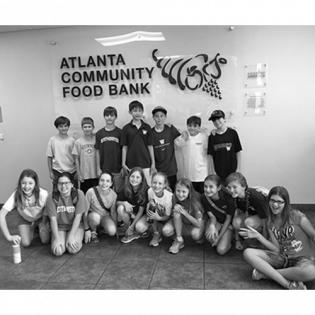Who Serves My Community? Creating a Map of Our Nonprofit Sector
Youth research and report back to the group about the nonprofit organizations that are serving their community and the many facets of community life that nonprofits are involved in.
Author: Urban EdVenture Faculty
The learners will
- research nonprofits in the community
- associate key ideas with the work of the nonprofit organizations.
- identify the purposes of nonprofits: they exist to achieve a mission, serve a target clientele, and are involved in all areas of public and private life.
- List of local nonprofits with a variety of focus areas (such as sports, education, arts, food, health, housing)
- Map of the community (Google Maps and a physical map)
- Compile a list of local nonprofit organizations that represent a wide cross-section of focus areas and of your community, geographically.
- Preview the websites of the organizations or collect information sheets and promotional material from each organization appearing on the list. This is important because many nonprofits do not have particularly strong web presences due to limited staffing. You may also discover that websites of some organizations are blocked by your campus web filter (for instance, some filters block websites that were created using a blog platform).
Nonprofit, community partner, community, nongovernmental organization (NGO)
In a written reflection, answer the following questions:
- What are issues in our community that are addressed by our nonprofit sector?
- Does the map show a pattern to the location of nonprofit organizations? Are nonprofits with similar missions concentrated in certain areas of the city?
- What questions do your observations raise?
A Word About Reflection: Reflection may take the form of a whole class discussion, asking for volunteers to share after completing a reflection, or keeping written reflections private. The type of reflection can depend on several factors, including the time left after other activities are completed, the tone of the class, how personal the reflection topic may be, and how strong the class bond is.
Instructions
Introduce the project of exploring the community needs and issues addressed by nonprofits. The youth will work in pairs to investigate everything about a single nonproft, including what need they address and how, where they are located and what else is around, and what they need from volunteers and philanthropist to do their work better. When they bring their work together as a whole, they'll have a big picture of the nonprofit work in their community.
Assign each working pair a local nonprofit organization from your list. As much as possible, allow them to select the nonprofit they investigate by their interest areas.
The working pair should research their organization and identify the following:
- Organization name
- Mission (what needs it addresses)
- Clientele (who they serve and how they get their funding or help)
- Volunteer opportunities
- Location (where located, what else is around, or why there?)
- Other needs
- Interesting facts - like statistics on the organization’s efforts
When all pairs have collected their information, each pair points out the location of their organization on the community map and gives a brief oral report to the whole group.
They discuss the variety of needs, different ways of serving the community, and any patterns they see across the nonproft work in the community.
In a written reflection, answer the following questions:
- What are issues in our community that are addressed by our nonprofit sector?
- Does the map show a pattern to the location of nonprofit organizations? Are nonprofits with similar missions concentrated in certain areas of the city?
- What questions do your observations raise?
